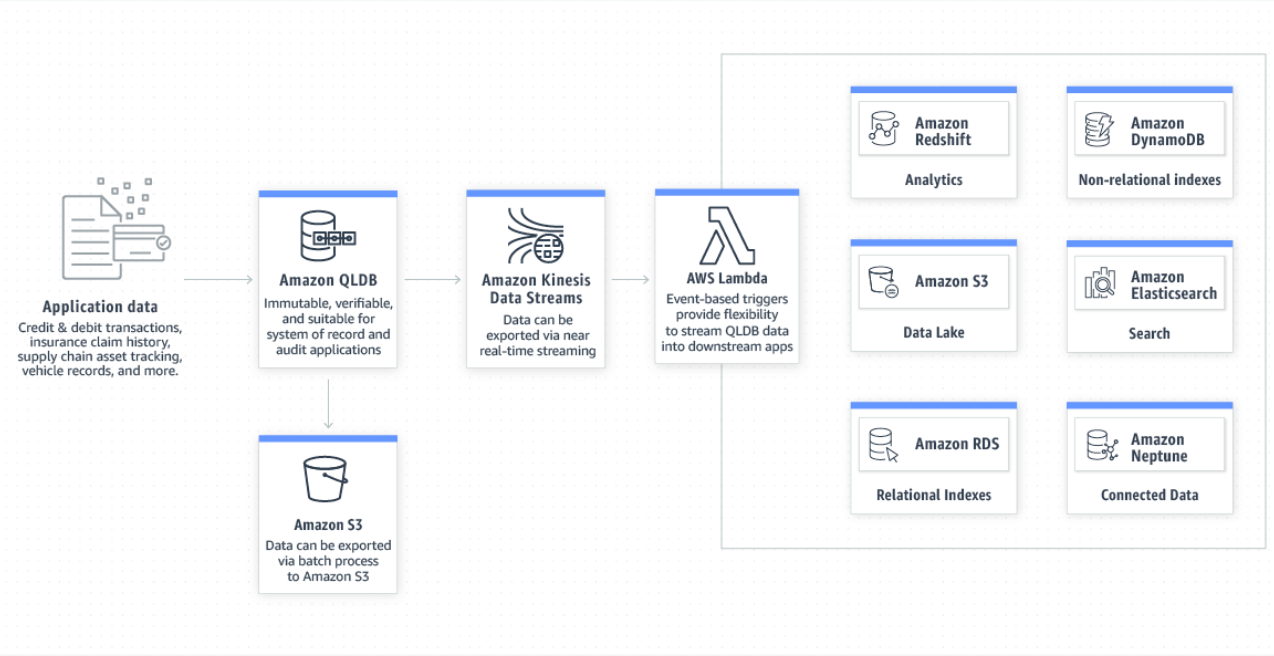Amazon Web Services (AWS): Quantum Ledger Database: Points to remember
Let's learn about Amazon QLDB:
-
Quantum Ledger Database is a purpose-built ledger database that provides a complete and cryptographically verifiable history of all changes made to application data.
-
Data in Amazon QLDB is written to an append-only journal, providing the developer with full data lineage.
-
Data in Amazon QLDB's journal is immutable and verifiable, meaning users can trust the data in their ledger.
-
QLDB is not a blockchain or distributed ledger technology.
-
QLDB supports transactions with ACID semantics, a flexible document data model & a familiar SQL-like API.
-
QLDB is fully managed and automatically scales to meet the needs of user's application with no provisioning required.
-
To connect to QLDB and transact with the data in the ledger, users need to use the AWS-provided QLDB driver.
-
QLDB can execute 2-3X as many transactions than ledgers in common blockchain frameworks.
-
QLDB has a centralized design, allowing its transactions to execute without the need for multi-party consensus.
-
QLDB allows to access and manipulate data using PartiQL, which is a new open standard query language.
-
QLDB's ledger is deployed across multiple AZs with multiple copies per AZ.
-
QLDB is strongly durable.
-
QLDB does not support cross-region replication.
-
QLDB is integrated with AWS Private Link.
-
QLDB uses AWS-owned keys to encrypt customer data. By default, all data in transit and at rest is encrypted.

-
QLDB Streaming capability provide at-least-once delivery guarantee.
-
QLDB provides CloudWatch metrics for ledgers.
-
QLDB stores data using a document-oriented data model, which provides users the flexibility to store structured and semi-structured data.
-
QLDB’s data model supports nested data structures.
-
QLDB transactions have full serializability - the highest level of isolation.
-
QLDB backs up data continuously while maintaining consistent performance, allowing it to transparently recover from any instance or physical storage failures.
-
QLDB uses a cryptographic hash function (SHA-256) to generate a secure output file of user data’s change history, known as a digest.
-
Manufacturers can use QLDB to easily trace the history of the entire production and distribution lifecycle of a product.
-
With QLDB, retail companies can look back and track the full history of inventory and supply chain transactions at every logistical stage of their products.
-
With QLDB, customers can easily maintain a trusted and complete record of the digital history of their employees, in a single place.
A Points to remember series by Piyush Jalan.